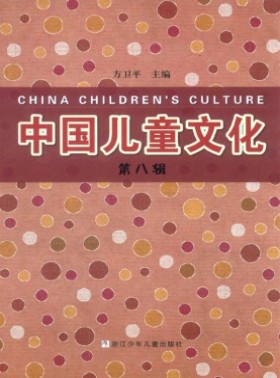前言:中文期刊网精心挑选了儿童口腔卫生宣教内容范文供你参考和学习,希望我们的参考范文能激发你的文章创作灵感,欢迎阅读。

儿童口腔卫生宣教内容范文1
[关键词] 儿童龋病; 龋风险评估; 个性化龋预防
[中图分类号] R 788 [文献标志码] A [doi] 10.7518/hxkq.2014.01.001
Caries risk assessment in children Zou Jing. (State Key Laboratory of Oral Diseases, Dept. of Pediatric Dentistry, West China Hospital of Stomatology, Sichuan University, Chengdu 610041, China)
[Abstract] Caries risk assessment (CRA) involves a combination and analysis of factors including individual’s age, biolo-gical factors, and protective and clinical findings. CRA significantly guides pediatric dentists and oral health caregivers in their decision-making plan for clinical treatment. The following is an introduction on the aspects of harmfulness of childhood caries and CRA for children of different ages.
[Key words] caries in children; caries risk assessment; individual caries prevention
口腔流行病学资料显示,儿童龋病的发病率高居儿童疾病首位,是居于发病率第二位的哮喘的5倍[1]。70%的低龄儿童龋(early childhood caries,ECC)发生于8%的儿童[2],可见儿童龋病的分布并非平均,而是存在患龋风险较高的人群,即龋高风险儿童。随着儿童口腔医学向龋损早期诊断和用预防替代修复治疗的方向发展,对人群进行龋风险预测,筛选出龋高风险儿童,有助于在个体水平上为患儿提供适当的防龋措施,在群体水平上更有效地利用卫生保健资源,有的放矢地降低儿童龋的发生。儿童龋风险评估是对儿童个体的年龄、生物学因素、保护性因素和临床检查结果进行综合性分析,评估个体的患龋风险,是口腔保健人员和牙医制定治疗计划的重要组成部分。本文从儿童龋病的危害、不同年龄阶段儿童龋风险评估的内容及作用等方面进行归纳。
1 儿童龋病的危害
乳牙在萌出后不久即可患龋,图1显示的是一个出生8个月的婴儿刚萌出的上颌中切牙已患龋。上颌乳切牙是乳牙龋病最为好发的牙位,其次是上颌乳磨牙。乳牙龋主要是由于不良的喂养或饮食习惯、不良的口腔卫生习惯、乳牙特殊的解剖及组织结构特点在致龋菌的作用下所致。
图 1 8个月婴儿上颌中切牙龋病
Fig 1 Caries of maxillary incisor in 8-month infant
ECC对儿童身体健康的危害超过成人,这种危害既影响局部也影响全身。乳牙因龋蚀致牙体缺损,尤其是涉及乳磨牙大面积牙体缺损时,患儿的咀嚼功能会明显下降,直接影响儿童的全身营养吸收,处于生长发育旺盛期的儿童的颌面部以及全身生长发育会受到影响。乳牙龋发展成牙髓根尖周病后可影响其下的恒牙胚,使其釉质发育不全,如特纳牙(Turner’s tooth)的发生。乳牙根尖周炎导致的局部牙槽骨破坏、牙根吸收异常、残根滞留等可使继承恒牙萌出顺序和位置均出现异常(图2),引起恒牙列错畸形的发生。幼儿期是儿童学习语言的关键时期,乳前牙的龋坏和早失会影响儿童正确发音及美观,给其心理健康造成一定的影响。
图 2 上颌乳中切牙残根滞留致恒中切牙萌出位置改变
Fig 2 Residual root retention of maxillary primary incisor causing
the position change of permanent incisor
2 儿童龋病的风险性评估(caries risk assessment,
CRA)
CRA是儿童口腔保健的一个重要组成部分,是指在儿童口腔保健或儿童牙医的医疗行为中,鉴别分析某些肯定或被认为与儿童龋相关的因素,以提供足够的证据确定某一个体在特定的时间内新发龋(成为龋洞或早期白垩斑,图3)的可能性,并提出个性化的防龋或治疗方案,促进并参与儿童龋病的治疗[3]。至今还无任何一个龋风险评估模型(caries risk assessing model,CRAM)能够准确地预知个体在一定时间内是否发生龋病,但目前公认一个好的CRAM应包括对个体饮食习惯、口腔卫生习惯、氟化物应用、易感个体及其口腔微生物群、个体所处的社会、文化背景和行为因素的综合分析与鉴别[4-8]。CRA需要儿童口腔保健工作者或牙医与儿童的家长进行充分的交流,详细了解儿童的出生状况、发育情况、饮食习惯、口腔卫生习惯及其父母的口腔健康状况等,根据评估结果获知机体对龋病的敏感性,从而制定个性化的口腔卫生保健计划。
口腔微生物群的评估多以菌斑、唾液为采样标本,检测变异链球菌、乳酸杆菌的含量及早期定植于口腔的年龄,测定菌斑的产酸能力或唾液缓冲能力等,近年来较为肯定的有Cariostat、Dentocult LB和Dentocult SM等方法[9-10]。在口腔检查中,如果儿童已有龋洞形成,或牙面已有白垩色改变,或牙面可见明显菌斑,或患儿有釉质发育不全,则提示该患儿处于高龋风险状态[11-12]。如果患儿的父亲或母亲喜欢甜食,父亲或母亲口腔内DMFT较高或有活跃性龋损,口腔变异链球菌计数较高,或家庭社会经济地位较低,均可导致其孩子处于高龋风险状态[9,13]。如果患儿有夜间进食的习惯,特别是有含着奶瓶入睡的习惯,或奶瓶喂养时间过长(超过1岁半),或喜食碳水化合物或含糖间食(sugar-containing snacks)或碳酸饮料,或患儿是有特殊健康需求的残障儿童,均可认为该个体处于高龋风险[14-15]。
图 3 右上颌乳中切牙颈缘白垩斑(红色箭头)与左上颌乳侧
切牙唇面龋洞(黄色箭头)
Fig 3 Cervical white spots of right maxillary primary incisor (red
arrow) and labial caries lesion of left maxillary primary lateral
incisor (yellow arrow)
使儿童龋风险降低的因素有:系统性和局部性的氟化物应用、糖代用品的使用、养成正确的刷牙方法和频率、定期的口腔保健(regular periodic care)和CRA。不论是系统性用氟的氟化水源,还是局部用氟的含氟牙膏、氟化泡沫、氟保护漆)均可增强儿童牙齿的抗龋力、降低其患龋风险[7,16]。在糖的代用品方面,许多研究证实使用木糖醇替代蔗糖可有效地减少菌斑和唾液中的变异链球菌数量,从而降低龋病的发生[17]。一天至少2次使用含氟牙膏刷牙、每次刷牙至少3 min,定期口腔保健和CRA均能有效地降低个体的患龋风险[18]。表1和表2显示的分别是美国儿童口腔医学会(American Academy of Pediatric Dentistry,AAPD)2011年制定的0~5岁和6岁以上儿童龋风险评估的内容[19-20],根据对儿童生物学行为、保护性因素和临床检查结果的分析,对个体评估其龋风险,制定其综合防龋及治疗计划,确定定期口腔检查的间隔时间与家庭牙科的宣教内容,降低儿童龋病的发生。
3 儿童龋病的综合防治
随着微创齿科(minimum intervention dentistry,MID)的观念被越来越多的临床牙医所接受,现代儿童龋病的治疗更强调早期尚未成洞的龋损修复和评估个体的患龋风险性,采取积极措施监控个体龋病的进展。个体的年龄、文化背景、社会经济地位、父母口腔健康状态等不同,其患龋风险也不同,因而应有不同的防龋措施和治疗计划。
表3~5显示的是不同年龄阶段、不同患龋风险儿童的龋病防治方案,从诊断、干预和修复方面为临床医生防治不同龋风险儿童的龋病提供参考[21-22]。
[参考文献]
[1] Benjamin RM. Oral health: the silent epidemic[J]. Public Health Rep, 2010, 125(2):158-159.
[2] Macek MD, Heller KE, Selwitz RH, et al. Is 75 percent of dental caries really found in 25 percent of the population
[J]. J Public Health Dent, 2004, 64(1):20-25.
[3] Zero D, Fontana M, Lennon AM, et al. Clinical applications and outcomes of using indicators of risk in caries manage-ment[J]. J Dent Educ, 2001, 65(10):1126-1132.
[4] Nicolau B, Marcenes W, Bartley M, et al. A life course ap-proach to assessing causes of dental caries experience: the relationship between biological, behavioural, socio-economic and psychological conditions and caries in adolescents[J]. Caries Res, 2003, 37(5):319-326.
[5] Featherstone JD. The caries balance: contributing factors and early detection[J]. J Calif Dent Assoc, 2003, 31(2):129-133.
[6] Featherstone JD. The caries balance: the basis for caries ma-nagement by risk assessment[J]. Oral Health Prev Dent, 2004, 2(Suppl 1):259-264.
[7] Singh KA, Spencer AJ, Armfield JM. Relative effects of pre- and posteruption water fluoride on caries experience of per-manent first molars[J]. J Public Health Dent, 2003, 63(1):11-19.
[8] Reisine ST, Psoter W. Socioeconomic status and selected behavioral determinants as risk factors for dental caries[J]. J Dent Educ, 2001, 65(10):1009-1016.
[9] Thitasomakul S, Piwat S, Thearmontree A, et al. Risks for early childhood caries analyzed by negative binomial models
[J]. J Dent Res, 2009, 88(2):137-141.
[10] Grindefjord M, Dahll?f G, Nilsson B, et al. Prediction of dental caries development in 1-year-old children[J]. Caries Res, 1995, 29(5):343-348.
[11] Vadiakas G. Case definition, aetiology and risk assessment of early childhood caries (ECC): a revisited review[J]. Eur Arch Paediatr Dent, 2008, 9(3):114-125.
[12] Alaluusua S, Malmivirta R. Early plaque accumulation—a sign for caries risk in young children[J]. Community Dent Oral Epidemiol, 1994, 22(5 Pt 1):273-276.
[13] Southward LH, Robertson A, Edelstein BL, et al. Oral health of young children in Mississippi Delta child care centers: a second look at early childhood caries risk assessment[J]. J Public Health Dent, 2008, 68(4):188-195.
[14] Burt BA, Pai S. Sugar consumption and caries risk: a syste-matic review[J]. J Dent Educ, 2001, 65(10):1017-1023.
[15] Tinanoff N. Association of diet with dental caries in preschool children[J]. Dent Clin North Am, 2005, 49(4):725-737.
[16] Fluoride Recommendations Work Group. Recommendations for using fluoride to prevent and control dental caries in the United States. Centers for Disease Control and Prevention
[J]. MMWR Recomm Rep, 2001, 50(RR-14):1-42.
[17] Ly KA, Milgrom P, Rothen M, et al. Xylitol, sweeteners, and dental caries[J]. Pediatr Dent, 2006, 28(2):154-163.
[18] Nowak AJ, Casamassimo PS. The dental home: a primary care oral health concept[J]. J Am Dent Assoc, 2002, 133(1):
93-98.
[19] American Academy of Pediatric Dentistry. Guideline on caries-risk assessment and management for infants, children, and adolescents[J]. Pediatr Dent, 2011, 33(6):110-117.
[20] American Dental Association Councils on Scientific Affairs and Dental Practice. Caries risk assessment form (ages 0-6)
[M]. Chicago: American Dental Association, 2008:11.
[21] White BA, Maupomé G. Clinical decision-making for dental caries management[J]. J Dent Educ, 2001, 65(10):1121-1125.
[22] American Dental Association Council on Scientific Affairs. Professionally applied topical fluoride: evidence-based cli-nical recommendations[J]. J Am Dent Assoc, 2006, 137(8):


